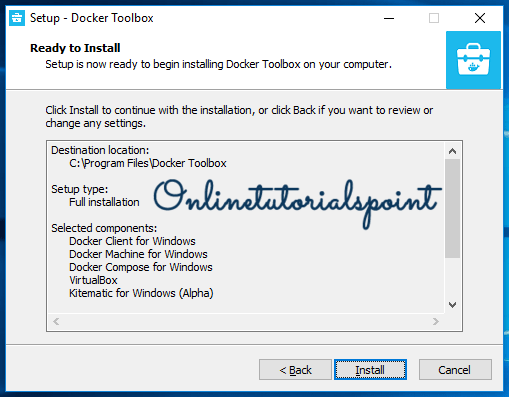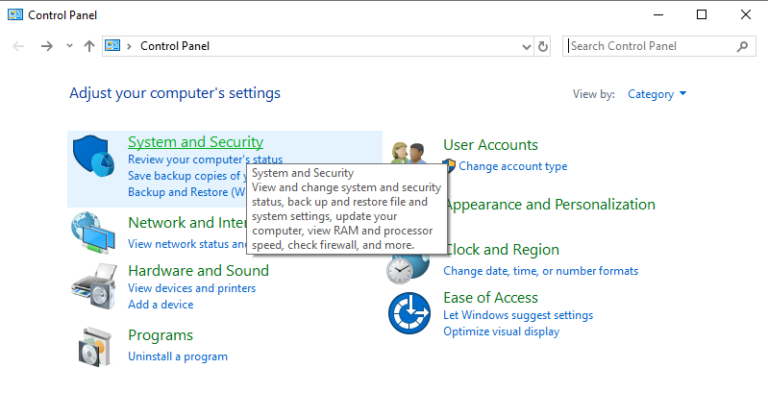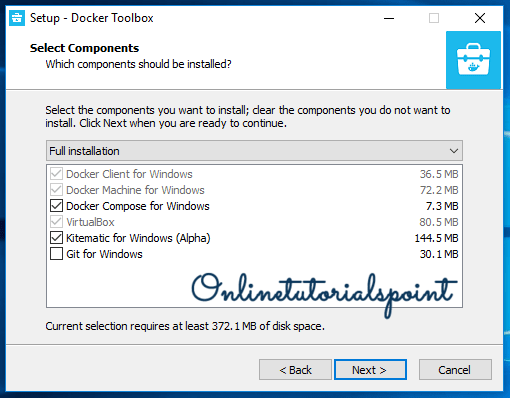Table of Content
An installer will be downloaded into your system. The prompt is traditionally a $ dollar sign. You type commands into thecommand line which is the area after the prompt. Your cursor is indicated by a highlighted area or a

Let’s dive into the next section to set up the environment needed to install Docker. 99.999% of the time, you only need a Linux Container, since it supports software built using open-source and .NET technologies. In addition, Linux Containers can run on any distro and on popular CPU architectures, including x86_64, ARM and IBM. If you do not agree to the terms, the Docker Desktop application will close and you can no longer run Docker Desktop on your machine. You can choose to accept the terms at a later date by opening Docker Desktop. To run Windows containers, you need Windows 10 or Windows 11 Professional or Enterprise edition.
Using Docker Toolbox on Windows 10 Home
You can check if your system supports this technology in two different ways. # Allow your user to access the Docker CLI without needing root access. First, allow me to explain how the Docker installation will work on Windows.

Back up and restore data provides instructions on backing up and restoring data related to Docker. Troubleshooting describes common problems, workarounds, and how to get support. Docker Desktop starts after you accept the terms. For detailed instructions, refer to theMicrosoft documentation. Commercial use of Docker Desktop in larger enterprises (more than 250 employees OR more than $10 million USD in annual revenue) requires a paid subscription. This window is used to select the components which you want to install.
Installation
A bit background on why installing Docker on Windows Home is different than installing it anywhere else. Windows Home edition doesn’t ship with Hyper-V feature which is required by Docker to run containers. Hyper-V is different than hardware virtualization which facilitates running virtual machines through tools like Oracle VirtualBox.

Till now we installed the Docker Toolbox on Windows 10 operating system lets start to access this. A full uninstall also includes removing the local and remote machines you created with Docker Machine. In some cases, you might want to keep machines created with Docker Machine.
Docker on Windows 10 Home
Double-click Docker Desktop Installer.exe to run the installer. Getting Started with Windows Containers provides a tutorial on how to set up and run Windows containers on Windows 10, Windows Server 2016 and Windows Server 2019. It shows you how to use a MusicStore application with Windows containers. This page contains information about Docker Desktop for Windows system requirements, download URL, instructions to install and update Docker Desktop for Windows. You can see the installation process; if everything went well, you could see the below success window. Click on the above highlighted Get Docker Toolbox for Windows button.

Since the Docker Engine daemon utilizes Linux-explicit portion highlights, you can’t run Docker Engine locally on Windows. Rather, you should utilize the Docker Machine order, docker-machine, to make and join a little Linux VM on your machine. This VM has Docker Engine for you on your Windows framework. 99.999% of the time, you just need a Linux Container, since it bolsters programming assembled utilizing open-source and .NET innovations. Likewise, Linux Containers can run on any distro and prominent CPU structures, including x86_64, ARM and IBM.
Commercial support is available at nginx.com. Double-click InstallDocker.msi to run the installer. Docker for Windows runs on 64-bit Windows 10 Pro, Enterprise, and Education; 1511 November update, Build or later. Docker plans to support more versions of Windows 10 in the future.

A Windows specific problem you might encounter relates to the NDIS6 host network filter driver, which is known to cause issues on some Windows versions. For Windows Vista systems and newer, VirtualBox installs NDIS6 driver by default. Issues can range from system slowdowns to networking problems for the virtual machine . If you notice problems, re-run the Docker Toolbox installer, and select the option to install VirtualBox with the NDIS5 driver. The virtual machine running Docker is managed by the docker-machine command.
If the system displays a User Account Control prompt to allow VirtualBox to make changes to your computer. When notified by Windows Security the installer will make changes, make sure you allow the installer to make the necessary changes. The installer launches the “Setup - Docker Toolbox” dialog. Run a tool like the Microsoft® Hardware-Assisted Virtualization Detection Tool or Speccy, and follow the on-screen instructions. If you aren’t using a supported version, you could consider upgrading your operating system.
Docker will download and run the “Hello world” container. A confirmation message will be displayed in the terminal. Check the components to be installed (“Git for Windows” is recommended; uncheck “VirtualBox” if already installed). Look under “CPU” to find out if virtualization is enabled or not. To get rid of the invalid settings error as seen in the above screenshot, simply increase Video Memory under the Display tab in the settings option. Video memory is not important in this case, as we’ll run the VM in headless mode.
Uninstall Oracle VirtualBox, which is installed as a part of the Toolbox install. Click OK to add the new folder to the Shared Folders list. Choose Auto-mount if you want the folder to automatically be mounted into the VM, and choose Make Permanent for it to be considered a permanently shared folder. The Docker Engine CLI client contacted the Docker Engine daemon. This message shows that your installation appears to be working correctly.


No comments:
Post a Comment